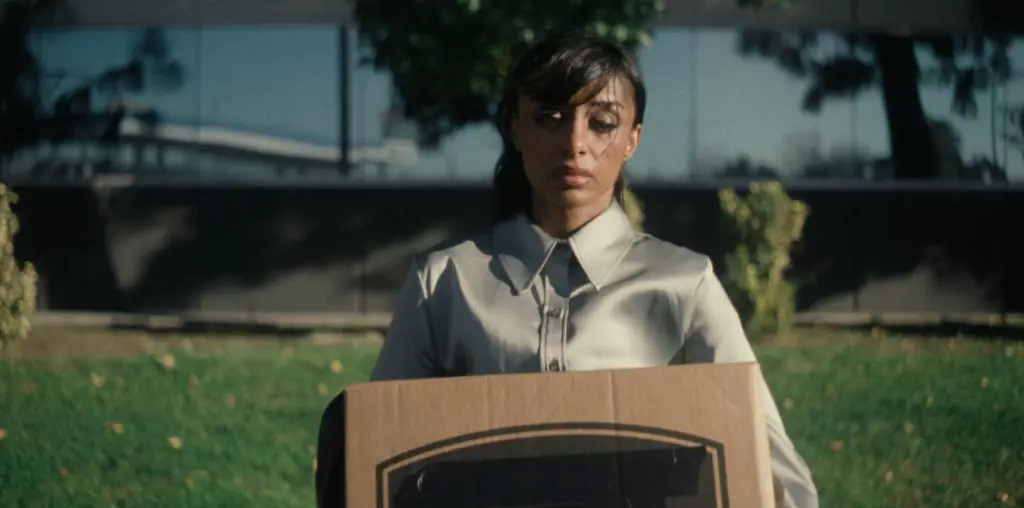
Dan Mirvish’s newest cinematic sensation, Between Us, is an absolutely stunning, darkly comic study of two married couples, whose lives and secrets travel a strange collision course when they meet. Paying a curious homage to John Cassavetes’ Faces and Robert Altman’s Short Cuts, Mirvish moves one giant step beyond proving just how precarious love, marriage, and best friendships can be.
The primary action in Between Us takes place at intimate dinner parties, over two evenings, approximately two years apart. The couples involved consist of longtime married, wealthy Midwesterners, Joel (David Harbour) and Sharyl (Melissa George), and recently married, bohemian New Yorkers, Grace (Julia Stiles) and Carlo (Taye Diggs).
It is at the first dinner at Joel and Sharyl’s exquisite estate that we learn that Joel and Carlo’s friendship began many years before, when both were photography majors at graduate school. Since then, Carlo made it big as an exhibiting fine arts photographer, while Joel settled into the more mundane position of commercial artist. As for the wives, both are beautiful and supportive, though the latter can be taken literally in Sharyl’s case, since, apparently, she’s inherited a fortune. This accounts for the magnificent home where Sharyl and Joel reside in loving, opulent bliss. Or so it seems…
Seems—that tricky devil of a word that appears so harmless, says so little, but seethes so much.
And so you can imagine what happens between the oh-so-sophisticated Joel and Sharyl when one word leads to another at this dear little gathering between friends, and soon disintegrates into a full blown return to Mike Nichol’s Who’s Afraid of Virginia Woolf? Well, maybe not as boozy and sweaty as old Martha and George enjoyed, but perhaps even more malevolent and pernicious in its neatly attired quietude. You get the point… as do the clean cut newbies, Carlo and Grace, who flee to New York just as fast as they can, never looking back at what could possibly infect them too, if they remain one second longer.
While the exploration of the ups and downs of marriage and friendship is certainly not novel, what separates Between Us from all the others of its ilk is its fresh approach. Yes, brutal, naked honesty prevails in the cinematic works of Nichols, Altman, Cassavetes, Hitchcock, and all the others too numerous to count, but Mirvish attacks the issues of humanity slowly, subtly, and through the juxtaposition of time, space, and visual cues. This invites the explosions and realizations experienced by both characters and viewers to become all the more pronounced.
One such visual cue, that is so sly and brilliant in its simplicity, manifests at the very end of Between Us. There, Mirvish works with the medium of photography itself, to show us just how soft, powerful and mutable life really is. Look for Mirvish’s signal, because it is, what I believe, the very crux of his arresting film, and which speaks decibels beyond what appears on the surface.
Between Us is strongly recommended for best friends, married couples, and those contemplating marriage at some future date.


